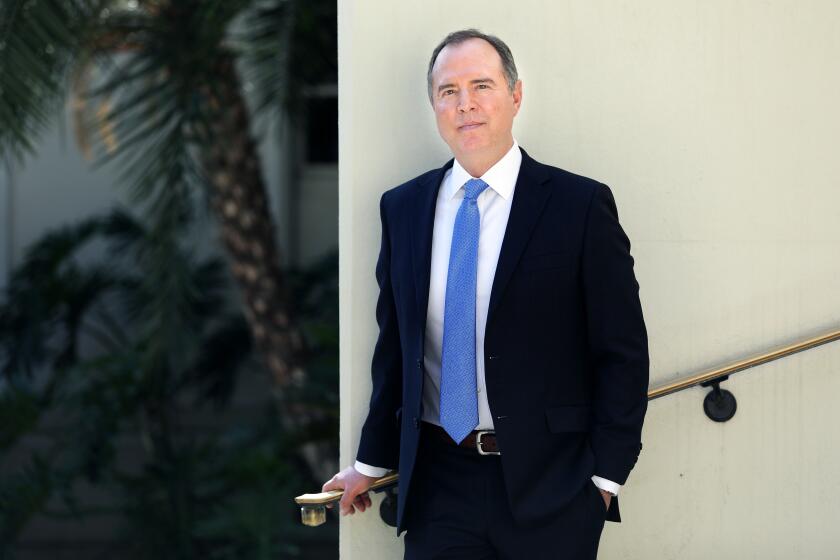PUC Decision Puts Special Burden on Municipal Utilities
- Share via
The state Public Utilities Commission’s decision to throw open California’s electricity market to free competition at year’s end puts enormous pressure on the Los Angeles Department of Water and Power and the state’s 37 other municipal utilities in the state to ready themselves for the same thing.
The DWP and other municipal utilities, which supply about 30% of the state’s power needs, are not covered by the PUC decision. But they were already facing tough political choices on raising electric rates, laying off workers, even whether to stay in the power business at all--issues tied to the new competition set to hit California’s $20-billion electricity market.
Now municipal utilities, including those in Pasadena, Burbank, Riverside and Anaheim, will have to make those decisions quickly or risk losing their biggest customers.
The bottom line for residential customers of municipal utilities is that their rates--traditionally cheaper than market rates--will in most cases go up, while business customers will enjoy reductions. In any event, no customer of DWP or any other California municipal power company can buy energy from anyone other than their local utilities until their respective city councils authorize it.
A new state law last summer set the wheels in motion to give residential and business consumers the right to buy electric power from outside energy providers--that is, companies other than traditionally monopolistic public utilities such as Southern California Edison, Pacific Gas & Electric and San Diego Gas & Electric.
The law assumed that most of the state’s 38 municipal utilities will have little choice but to offer their customers the same option, but left the final decision up to the individual cities. It gave them two years to prepare, figuring politics would inevitably slow the process of the munis’ conversion.
But Tuesday’s decision by the PUC accelerating “free-market access” to begin statewide on Jan. 1 reduces the time frame for municipalities and complicates the process considerably, said Pasadena City Manager Philip A. Hawkey, who oversees the 57,000-customer municipal Pasadena Water and Power Department.
“Our major challenge was to transform a government monopoly into a market-competitive business, and our original timetable was to do that by 2004. But this has dramatically accelerated the timetable for us. We’re dreaming to think we have all those years to phase it in when the rest of the world is deregulating on Jan. 1.”
Pasadena will step up its plan to pay off its debt and reduce costs and “reposition ourselves to be a competitive business,” Hawkey said.
The city of Riverside has openly discussed getting out of the power business altogether, selling its power utility or transferring operations to an outside firm.
Other municipal utilities around the state have already acted. Redding has approved a 20% rate increase for some residential customers, in effect eliminating a subsidy long paid by the utility’s commercial customers to keep home rates down, said an official with the California Municipal Utility Assn. in Sacramento.
The DWP, the nation’s largest municipal utility, with 1.3 million customers, has been advised by its advisors to do the same as part of a complete restructuring, a politically explosive process that in addition to rate increases is likely to include the elimination of more than 1,000 DWP jobs.
Adding to the political tinder is an upcoming vote on a strategic partnership proposed by DWP with Duke/Louis Dreyfus, a Connecticut-based power marketer, which the DWP sees as essential in preparing for the competitive electricity marketplace coming to California. But before votes on any of these issues takes place, Los Angeles City Councilwoman Ruth Galanter, head of the council’s electric restructuring committee, wants the council to first approve a new DWP general manager to fill the vacancy created by William McCarley’s retirement in March.
“The highest priority is to get a general manager hired and in place. To get votes taken on direct access, restructuring and strategic alliance, I think we need the captain of the ship on board over there,” Galanter said.
The fact that DWP commercial customers cannot yet buy energy from outsiders is not stopping businesses from making deals. Big electricity customers in the DWP’s coverage area are making agreements with power marketers that will go into effect once the city approves direct access, according to a DWP executive who asked not to be named.
As for residential customers, chances are that bills will go up, not down, once the market barriers are removed. DWP residential customers now pay 20% less than Edison customers, a discount subsidized by industrial users. And the DWP knows that to prevent its big customers from bolting to companies offering better rates, it must erase the subsidy.
Alan Spen, executive managing director of Fitch Investors Service of New York, predicts that some of the state’s weaker municipal utilities will have to form alliances that may stretch across state boundaries.
“The window is starting to close and force people to make tough decisions sooner, to lower debt, to get into the power business or get out,” Spen said.
More to Read
Get the L.A. Times Politics newsletter
Deeply reported insights into legislation, politics and policy from Sacramento, Washington and beyond. In your inbox twice per week.
You may occasionally receive promotional content from the Los Angeles Times.










